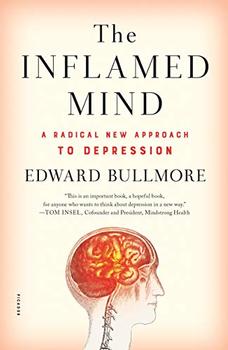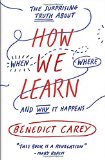Summary | Excerpt | Reviews | Beyond the book | Read-Alikes | Genres & Themes | Author Bio

Investigations into the Strange New Science of the Self
by Anil AnanthaswamyThe short and seemingly simple question "Who Am I?" has sure caused an awful lot of trouble for several hundred years. Philosophers and psychologists have written books on the subject of the still-elusive "self," and over the last 50 years or so neurologists have gotten into the game, using the diagnostic tools of science to discover if the self even exists – and if so, where?
On the one hand, it's a sort of intellectual parlor game: who can come up with the best theory regarding the highly abstract notion of consciousness? On the other hand, nothing could be more important in helping understand the "perturbations of the self" – Alzheimer's, schizophrenia, autism, and other conditions that disrupt the steadying functions of human cognition that contribute to our notions of selfhood.
There's a lot of data mining going on at the nexus of biology, psychology and philosophy, but fortunately for the reader who might not know his Descartes from his Darwin, help has arrived. The Man Who Wasn't There: Investigations into the Strange New Science of the Self chronicles the groundbreaking research into several "neuropsychological conditions that disturb the self."
In the tradition of writers such as the deceased Oliver Sacks, who based his non-fiction narratives on people who suffer from inconvenient and often bizarre neurological conditions, Ananthaswamy has built his book on several individual case studies. Not a doctor himself, Ananthaswamy is nevertheless an award-winning science journalist who's at home in the world of medical jargon, and who (mostly) translates the complex lingua franca of neurology into readable prose.
Choosing interesting cases to write about is the key to keeping an audience of non-specialists interested in your topic, and in this task, Ananthaswamy has succeeded, focusing on a group of people whose conditions are as heartbreaking as they are head-scratching. His first chapter is dedicated to people who suffer from Cotard's syndrome, "the delusional belief that one is truly dead and no longer exists." Such a condition is quite rare, though common enough for there to be a body of literature regarding treatment and case histories. More common – and more difficult to read about, quite frankly – is a related condition called "Body Integrity Identity Disorder [BIID]." Those who experience this condition have an overwhelming desire to amputate an otherwise healthy limb or limbs, due to some impairment of a region in the brain that makes the limb feel alien, "an estranged body part [that] becomes an object of obsession." It is a gruesome irony that amputation, in almost all documented cases, brings great joy and relief to the sufferers of BIID.
These cases and others – from the commonly known (Alzheimer's disease) to the highly unusual (Ecstatic epilepsy, in which seizures convey a feeling of transcendent joy) to the almost supernatural (the Doppelganger effect, where people see and interact with a duplicate of their own body) – are linked, Ananthaswamy suggests, by the simple fact that each condition involves disruptions in an area of the brain where the "self" is thought to reside. And that's the author's real quarry here – not documenting the search for cures or treatments for these conditions, but the quest to understand the "self."
By determining how the "self" gets disrupted by these anomalies, we can learn what it is: "Is it real or an illusion? Is the self in the brain, and if so, where in the brain is it? Neuroscience is telling us that our sense of self is an outcome of complex interactions between the brain and body, of neural processes that update the self moment by moment, the moments strung together to give us a seamless feeling of personhood." And by looking at aspects of the self under attack, we can better understand its nature, he argues: "We can turn to insights of people suffering from various perturbations of the self, which serve as windows to the self. Each such neurological disorder illuminates some sliver of the self, one that has been disturbed by the disorder, resulting at times in a devastating illness."
So there it is, whatever it is. Different readers will take different things from this challenging, weirdly compelling book. Many will, I suspect, be much more engaged by the actual case studies than by the author's meditations on the self, though some will be a bit put off by the undeniably tragic nature of some of the suffering documented. Other readers will likely seize on the almost Buddhist sensibility behind the author's eventual embrace of the idea that "the malady is the self." Some therapists might quibble with Ananthaswamy's implied endorsement that these medical conditions aren't really liabilities at all, but rather it's the way we look at them that makes them "appear as deficits…but what if the disturbances were seen as the outcome not of deficits of self but of an obsessive attachment to the idea of a self? Letting go could have therapeutic benefits."
These are heady questions, indeed, and Ananthaswamy deserves credit for wading into this fraught and fecund arena. His book will strike many as a revelation – most especially those who are facing neurological challenges of their own. He presents a persuasive case that it's time to redefine the way we think of personhood, and that the paradigm of defining who we are by how we appear in the world no longer holds currency. Taken as a whole, the work that Ananthaswamy presents offers a prismatic portrait of humanity that focuses on the interior, not the exterior. The implications of this line of thinking are immensely profound: is our notion of selfhood about to be freed from an historically paralyzing body consciousness? Can conditions like autism initiate us into different and deeper understandings of the world?
I don't know that The Man Who Wasn't There provides any specific answers to those bigger questions. At least, I didn't find any answers myself. But who am I, really?
Then again, who are any of us?
![]() This review was originally published in The BookBrowse Review in September 2015, and has been updated for the
August 2016 edition.
Click here to go to this issue.
This review was originally published in The BookBrowse Review in September 2015, and has been updated for the
August 2016 edition.
Click here to go to this issue.

If you liked The Man Who Wasn't There, try these:

by Edward Bullmore
Published 2019
Worldwide, depression will be the single biggest cause of disability in the next twenty years. But treatment for it has not changed much in the last three decades. In the world of psychiatry, time has apparently stood still...until now with Edward Bullmore's The Inflamed Mind: A Radical New Approach to Depression.

by Benedict Carey
Published 2015
In the tradition of The Power of Habit and Thinking, Fast and Slow comes a practical, playful, and endlessly fascinating guide to what we really know about learning and memory today—and how we can apply it to our own lives.
Your guide toexceptional books
BookBrowse seeks out and recommends the best in contemporary fiction and nonfiction—books that not only engage and entertain but also deepen our understanding of ourselves and the world around us.